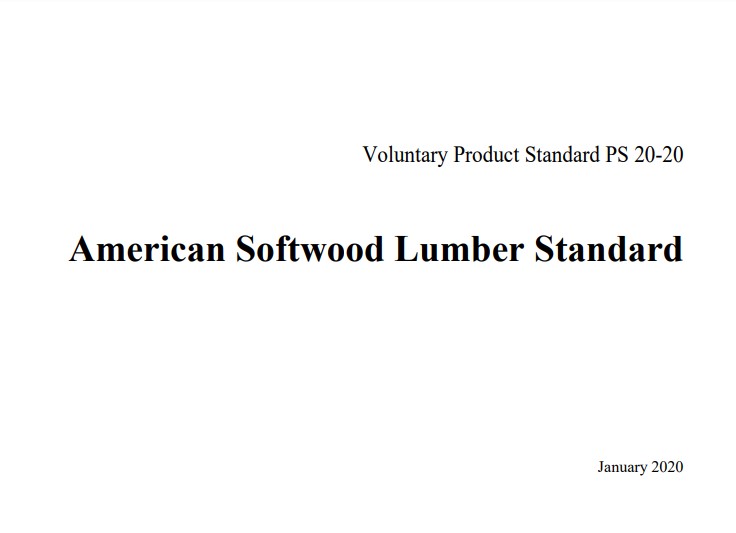
American Softwood Lumber Standard
Voluntary Product Standard PS 20-20
American Softwood Lumber Standard – January 2020
American Lumber Standard Committee, Incorporated
The American Softwood Lumber Standard is a set of voluntary technical specifications and grading rules established by the American Lumber Standard Committee (ALSC) to ensure consistency and quality in softwood lumber products that are manufactured and sold in the United States.
Softwood lumber products are used extensively in construction, furniture making, and other industries, and they come from a variety of softwood species, such as pine, spruce, fir, and cedar.
The ALSC’s standards for softwood lumber products specify the allowable size, shape, and other physical characteristics of the lumber, as well as the allowable defects, such as knots, splits, and wane (wane is missing wood due to the curved exterior of the log). The standards also specify the grading rules for each lumber grade, such as No. 1, No. 2, No. 3, and so on.
Manufacturers who choose to comply with the ALSC’s standards can obtain a grade stamp on their softwood lumber products that indicates the grade and the mill where the lumber was produced. The grade stamp is a valuable tool for builders and other users of softwood lumber products to ensure that they are getting the quality and grade of lumber they need for their projects.
The ALSC’s softwood lumber standards are voluntary, meaning that manufacturers are not required by law to comply with them. However, most softwood lumber manufacturers choose to comply with the standards because they recognize the benefits of having a standardized system of quality control for their products. It also makes it much easier to sell the lumber.
From the Standard itself:
“The American Softwood Lumber Standard was developed by the American Lumber Standard Committee (ALSC) in accordance with the Procedures for the Development of Voluntary Product Standards of the U.S. Department of Commerce. The ALSC membership is appointed by the Secretary of Commerce to constitute a proper balance among producers, distributors, and consumers of softwood lumber.”